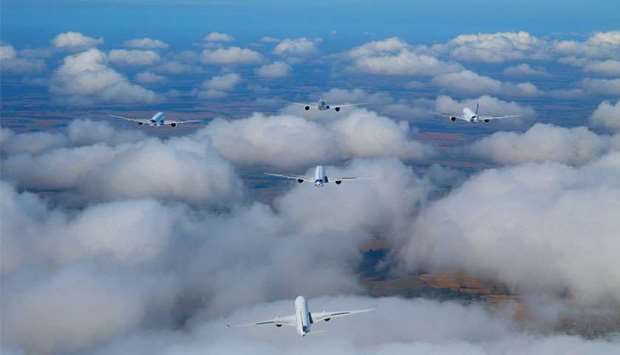The Middle East will account for 132 aircraft deliveries this year, says the International Air Transport Association (IATA), which is a clear sign of the region’s increasing passenger traffic in both the domestic and international segments.
Of the 132 aircraft deliveries, 77 will be wide-body and 55 narrow-body aircraft, data provided to Gulf Times Aviation by IATA reveal.
The region registered aircraft deliveries totalling 122 last year and 123 in 2016.
In August, Middle Eastern carriers posted a 5.4% traffic increase even as passenger volumes trended upwards at an 8% annualised rate since the start of the year.
Capacity increased 6.3%, with load factor slipping 0.7% to 80.7%.
On freight volumes, IATA said, the Middle Eastern carriers posted a 2.2% increase in August compared to the same period last year. This was a significant deceleration in demand over the 5.4% recorded the previous month.
The two largest markets of the Middle East — Asia and Europe — are growing at 4.7% and 6.8% year-on-year (y-o-y) respectively, IATA said.
The fastest growing market overall is Africa-Asia where the growth is running at a double-digit pace of 12% y-o-y, supported by business and investment flows.
With the main exception of Middle East to North America, where growth is a modest 2.8% y-o-y, the main markets for the region’s airlines are showing solid revenue passenger kilometres (RPK) growth.
In terms of air freight, the two largest markets for Middle East carriers (Asia and Europe) are showing healthy growth of 6.2% and 4.3% y-o-y respectively.
However, all of the main markets for Africa are showing a sizeable decline in y-o-y freight volumes, IATA data show.
IATA’s director-general and CEO Alexandre de Juniac said,
“Aviation is the business of freedom, reuniting friends and families and connecting businesses to markets. To preserve that freedom, air links need to be maintained. For that reason, it is absolutely critical that UK and EU aviation negotiators achieve a post-Brexit agreement. It is not just about permission for flights to take off and land.
“Everything from pilots’ licences to security arrangements, besides much more, needs to be agreed upon. Mutual recognition of existing standards can address much of this, but we cannot wait until the eleventh hour. An assumption that ‘it will be all right on the night’ reveals little understanding of the complexities involved. Preparations should be made for every contingency, in an environment of far greater transparency than we have seen to date.”




